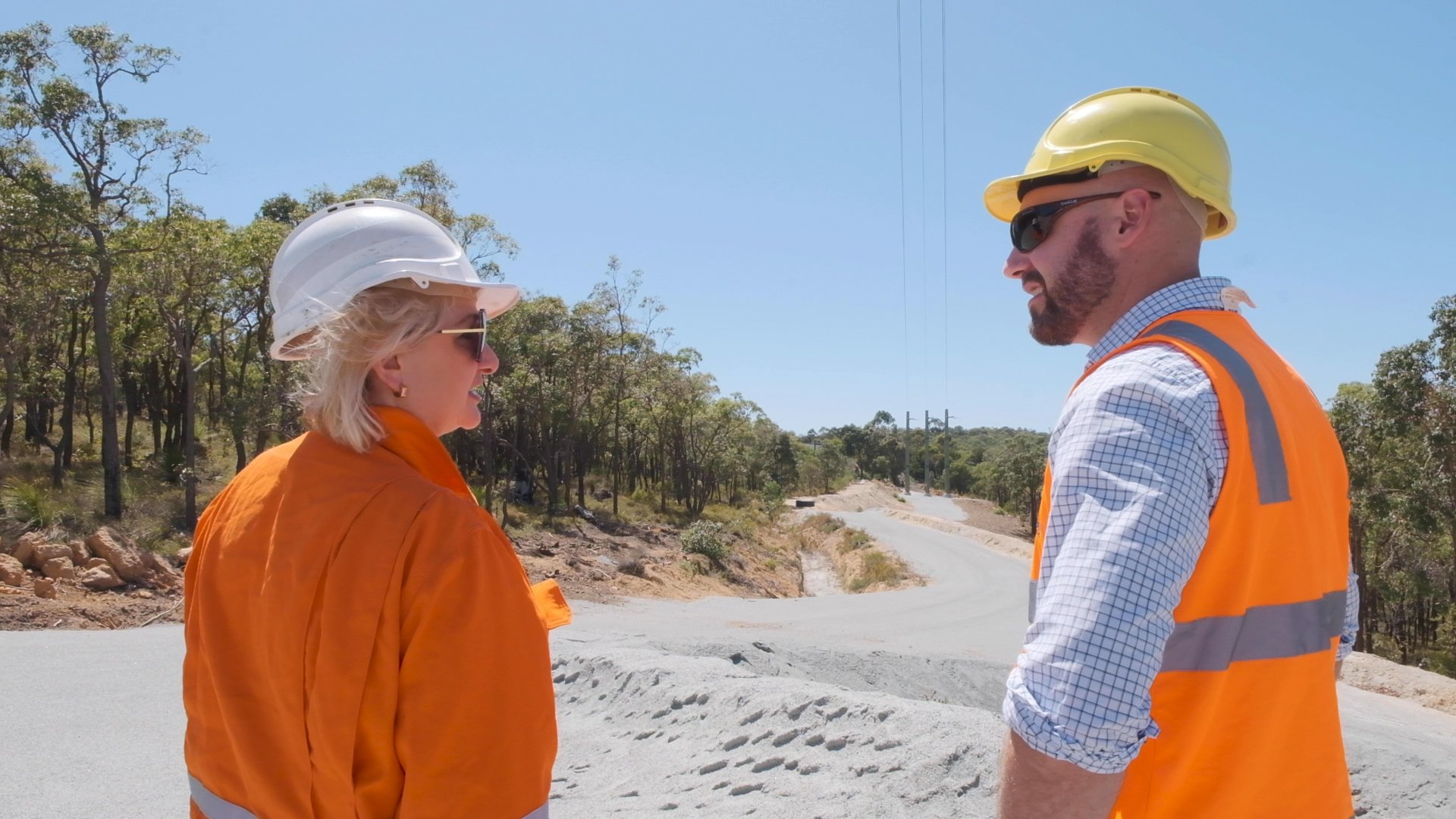We’re big on looking out for each other. Our crew. Our customers. And the wider WA community. We also have a soft spot for our furry friends out there, their habitat and the environment around us.
Every project we take on, from building microgrids to putting up powerlines or laying underground cables, or installing smart streetlights, has their own unique challenges.
Before we get our crews out to do the work, a lot of planning and preparation happens behind the scenes, including project modelling and plans, risk assessments, geo-tech investigations and workforce planning.
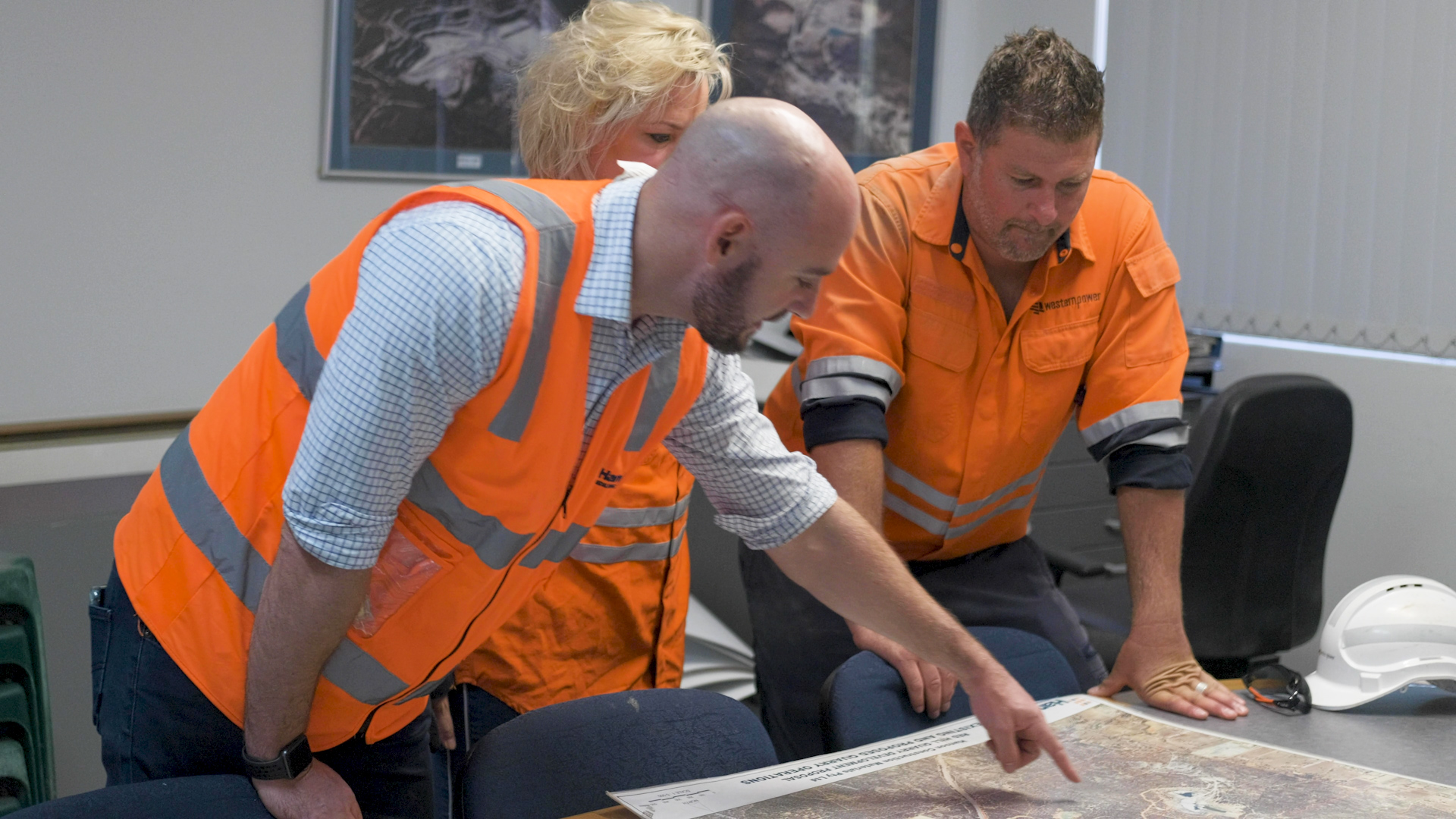
Another big-ticket item is analysing the impact of our work on the environment.
Our Safety, Health and Environment Policy incorporates principles on sustainable environmental management and protecting the natural environment, through appropriate planning and design of the network.
At Western Power, we recognise that habitat loss is one of the greatest threats to Western Australia's unique biodiversity.
Ensuring we appropriately assess and then put in place measures to protect and conserve the natural environment we’re working in. To make sure that happens, we often need to come up with innovative approaches to get the job done and protect the natural habitat.
Case in point: Red Hill Quarry
Construction and building material supplier Hanson were expanding their quarry at Red Hill. It was a huge undertaking and we were commissioned to move a 2.1km 132kV transmission line, and build the biggest tower foundation we’ve ever constructed, to support three transmission towers.
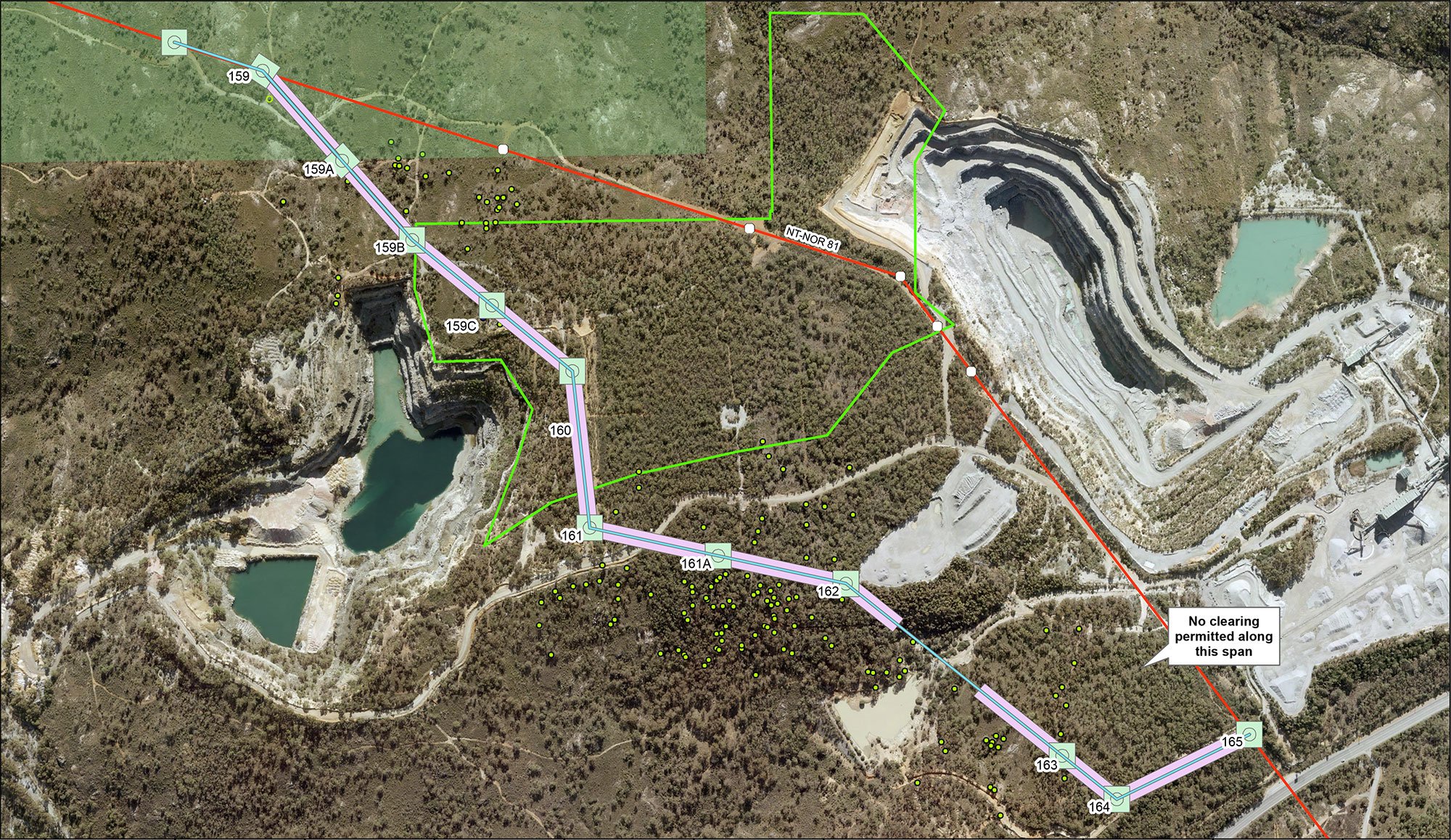
Above: the existing transmission line that needed to be moved (purple/green line) and the new transmission line (red line).
Because the area is a conservation estate, we had to ensure appropriate approvals and management plans were in place to allow access to the site and meet the environmental and indigenous heritage challenges.
- Stringing wires across the valley – laying 500m of wire across a deep valley is no easy task. Normally a job like this would make use of a helicopter but flying so low posed high safety risks. Our cost-effective and safe solution involved creating a small walking path and then lowering the wire into the valley. Once the wire was at the base of the valley, it was walked through a small section of bushland then lifted up by a crane to protect the de-energised high voltage lines underneath. The wire was then lowered, attached to a light vehicle and driven to the top of the valley on the other side. To ensure clear and safe access, some clearing was required and environmental management plans were followed to reduce any impact on the surrounding environment
- Keeping the Nuytsia floribunda (Christmas tree) intact – these trees play a significant part in Aboriginal culture and heritage as the Aboriginal people would bury the deceased beneath them. Yvonne Daddow, our Aboriginal Liaison Officer, says “It is said in Aboriginal culture that the trees shall bloom a bright orange flower at Christmas time to display the number of blessings it had received from the Aboriginal people. Of course, not every Christmas tree has an Aboriginal person buried under it, but for Aboriginal culture it is a respected tradition to protect the trees for this very reason”. By redesigning the access road, we were able to prevent any damage to the tree that was on site near the works.
- Avoiding contact with the owl stone – this area of indigenous heritage is a mythological ochre site. Ochre is the red clay used in indigenous art and rock paintings. As Yvonne Daddow explains, “Aboriginal Elders of the area refer to it as ‘Boyay Gogomat’. The name is derived from the symbolic representation of an ancestral hawk owl and is a spiritual and totemic site. The symbolism of this rock means that the spiritual significance is of high cultural importance to the ancestors of the Aboriginal people and must be protected and respected at all times.” Clearing works were originally scheduled in preparation for the construction of the towers but to maintain the important cultural values of the rock, we changed our foundation points to avoid the area completely and caused no disruption.
- Protecting black cockatoos – a large population of this threatened species live in the area. We realigned the works to avoid known nesting trees and minimised the clearing works in this area. An environmental management plan was put in place to manage the fauna in the area which included a fauna specialist inspecting the area every seven days to allow works to continue if there was no impact identified
- Dieback control – Dieback is a plant pathogen that kills flora by attacking the root system. In affected areas it moves naturally around one metre a year, but if it becomes attached to vehicles, the disease can spread at alarming rates.
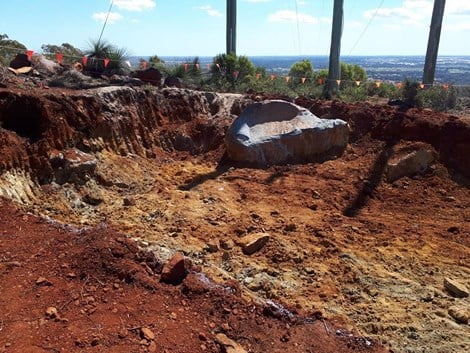
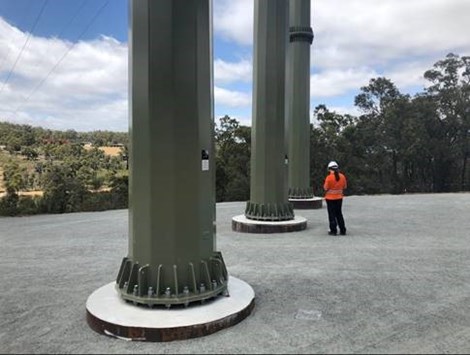
Clearing ground to construct the tower foundation (left) and after completion, the towers were painted green to blend in with the surrounding landscape as much as possible (right).
Mapping was carried out to identify areas of dieback and control any spread during the works.
"Dieback is known as the ecological bulldozer and it is important to ensure actions are in place so that our works don’t become a vehicle for the spread of dieback and the consequent environmental damage that follows dieback infestations”, says James Widenbar, Environmental Safety & Planning Assessment Team Leader.
A hygiene management plan was used, including strict vehicle wash downs and green card training for all crews involved. As rain can also impact the spread of dieback, works were paused during rain periods to minimise the potential spread.
Analysing the potential environmental impact of our works and taking measures to minimise it is a key part of our project planning. Western Australia has unique natural environmental and we, as part of the WA community, do what we can to help ensure it’s preservation.
Want to know more about how we manage our works around indigenous heritage sites? Find out here.
Protecting our beauty rich and rare - find out how we manage WA's precious fauna in and around our work sites.
